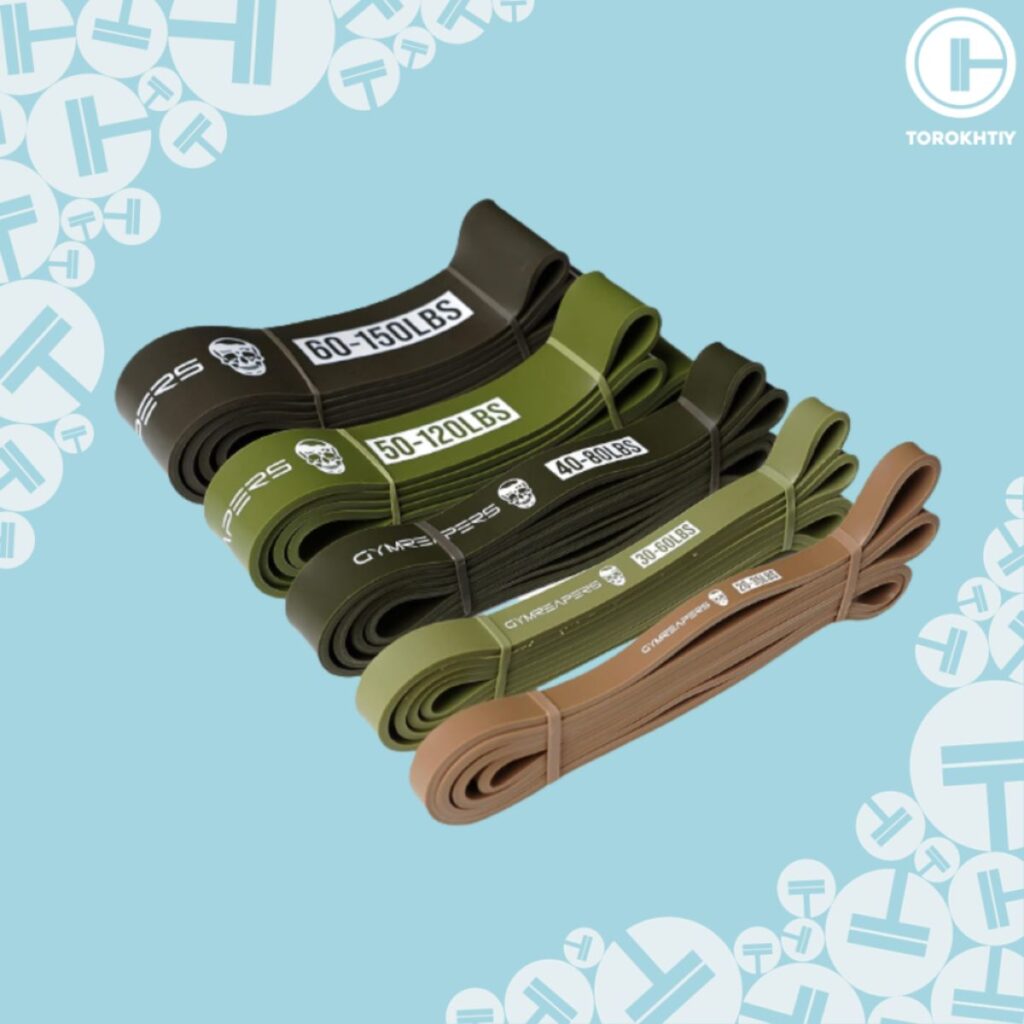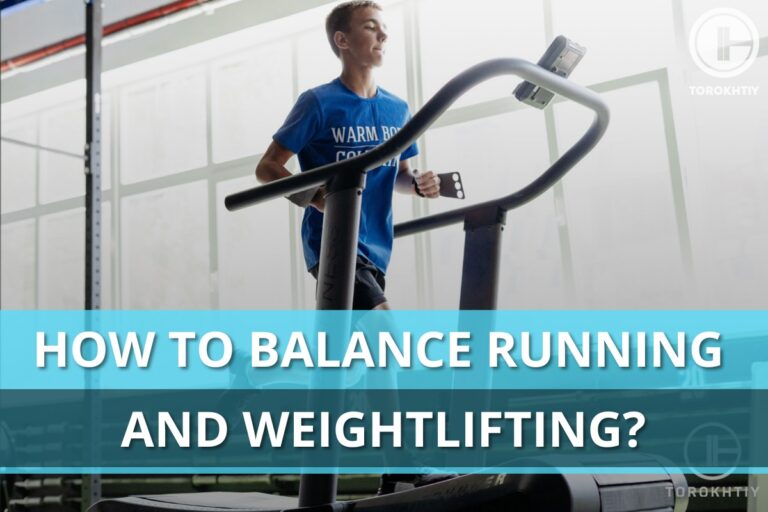Resistance Band Rows: How-To, Benefits, Variations
So, you have a set of resistance bands and want to try banded rows. This article showcases why many people prefer resistance band rows over free weights and rowing machines.
We’ll also teach you a couple of seated and standing rowing exercises with resistance bands, to help you get the perfect back workout using just resistance bands. But first, a quick summary:
Are Resistance Band Rows Good? Resistance band rows can be just as effective at training your back as using a rower or free weights. Studies have shown muscle activation is nearly identical when you row with resistance bands vs. traditional rowing exercises.
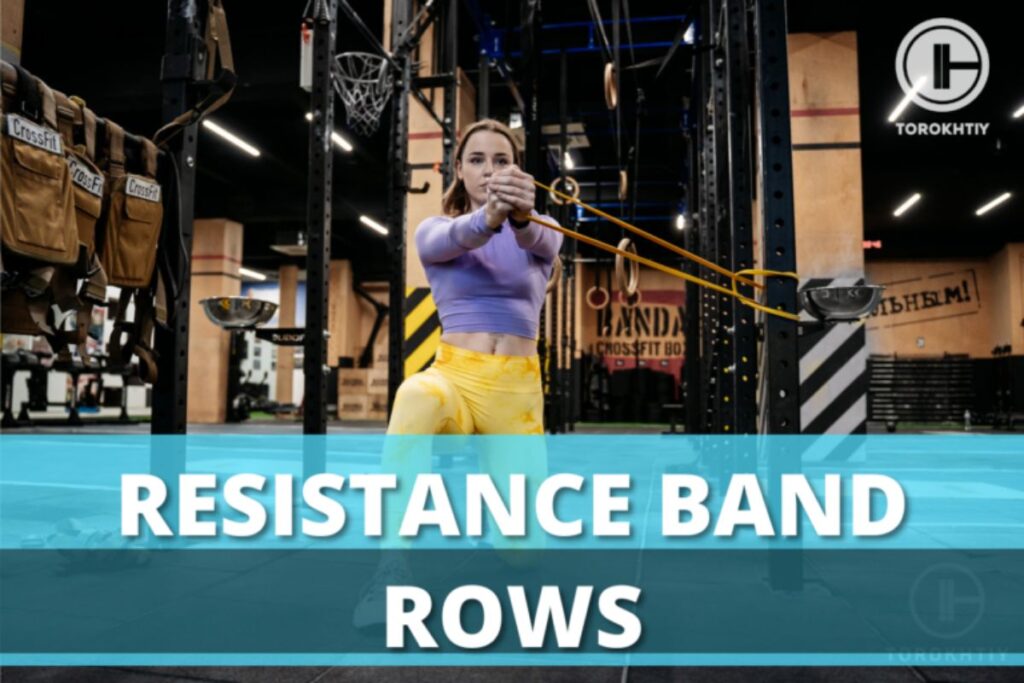
Resistance Band Rows
Rowing is an excellent exercise method for developing your back. Working out your back carries many benefits, including increasing strength in push/pull movements, improving balance and posture, protecting your spine, reducing pain and preventing injuries, and getting that ideal “inverted triangle” upper body shape, to name a few.
Just like traditional rowing exercises using a rowing machine or free weights, resistance band rows primarily target your back muscles, as well as your shoulders and arms to some extent. Depending on the exercise, the muscles worked include the Latissimus Dorsi (Lats), upper and middle Trapezius (Traps), Rhomboids, Deltoids (Delts), and Biceps Brachii. With a single set of resistance bands, you can create an all-encompassing back workout.
Resistance Band Row Benefits
Rows with bands can be just as good, if not better than weighted rows depending on your workout goals. Here are some of the benefits worth mentioning:
1. As Effective As Weights
It may come as a surprise, but studies have shown that rowing exercises with resistance bands can be just as effective as using weights or rowers at stimulating strength and muscle gain. Moreover, other studies have observed that rowing with bands as opposed to free weights ends up activating the ancillary muscles to a greater extent.
2. Safe And Low-impact
Not only are banded rows effective, but they’re also safer in many ways than rowing with dumbbells or barbells. There’s little risk of dropping them and hurting yourself or damaging the space around you, and they’re never too heavy for you to handle. Additionally, they’re far less stressful on the joints than holding onto weights, and disengaging from the exercise is as simple as just letting go without worrying about the equipment.
3. Highly Adjustable
Rows with bands are great because you get to set your workout difficulty at every step. If you want to quickly adjust the resistance level, you don’t need to make changes to the equipment (which can be a hassle to do, especially repeatedly). For most exercises, taking a step forward or back or simply pulling harder/easier or faster/slower is all that’s needed to increase or decrease the difficulty, making adaptations possible on the fly as well.
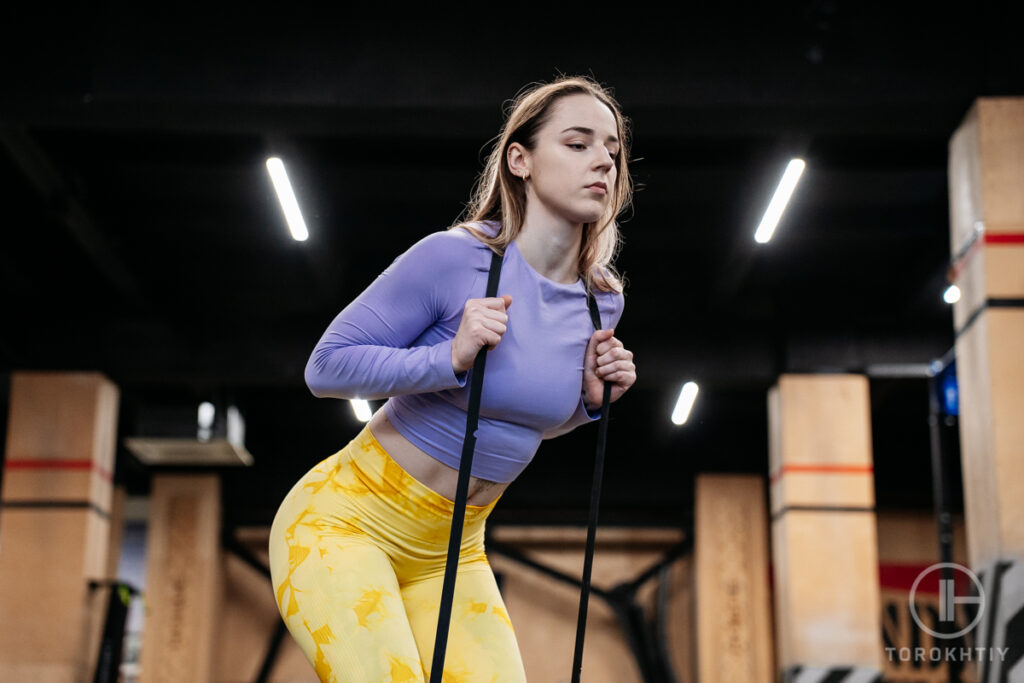
4. Inexpensive
Resistance bands are getting more popular by the day thanks to being budget-friendly. Even a pair of premium resistance bands doesn’t come close in price to a rowing machine, a quality set of weights, or a monthly gym subscription.
5. Portable And Compact
Another great thing about resistance bands is they’re lightweight and easy to carry. You can use them at home or put them in your gym sack and take them with you and work out pretty much anywhere. What’s more, you don’t have to dedicate storage space for them as you would for a set of dumbbells, barbells, and weight plates, or an entire rowing machine.
How To Do Resistance Band Rows?
1. Find An Anchor Point
Ideally, you want to have a secure structure on which you can anchor your resistance bands. For example, a pillar, steel beam, or even a tree. Some people also anchor them to their door handles, bed frame, or other heavy furniture — this can work but isn’t advisable on higher exercise difficulty due to the possibility of your anchor point failing.
For those of you who’ve already built up a home gym, feel free to use your rack or smith machine, assuming that it’s fixed to the ground. If you don’t mind some DIY work, you can also install an eye hook or anchor point on your wall. In case you don’t have anywhere to anchor them, you can always use your feet. Either step on them or tie them around your foot and you’re ready to go.
2. Mind Your Elbows
Hand placement and elbow positioning are essential to hitting the proper muscle groups when rowing with resistance bands. At the start of the exercise and before each rep, your arms should be nearly fully extended. Regardless of if you’re using a high or low grip, your elbows need to pass behind your back and your shoulder blades need to come close together to complete the exercise.
At every point of the exercise, you should be able to control the pullback of your resistance bands. Loose arms and shaky elbows are typically the result of exercise difficulty being too high, so if you find yourself unable to control your body, consider lowering resistance by using a lighter band.
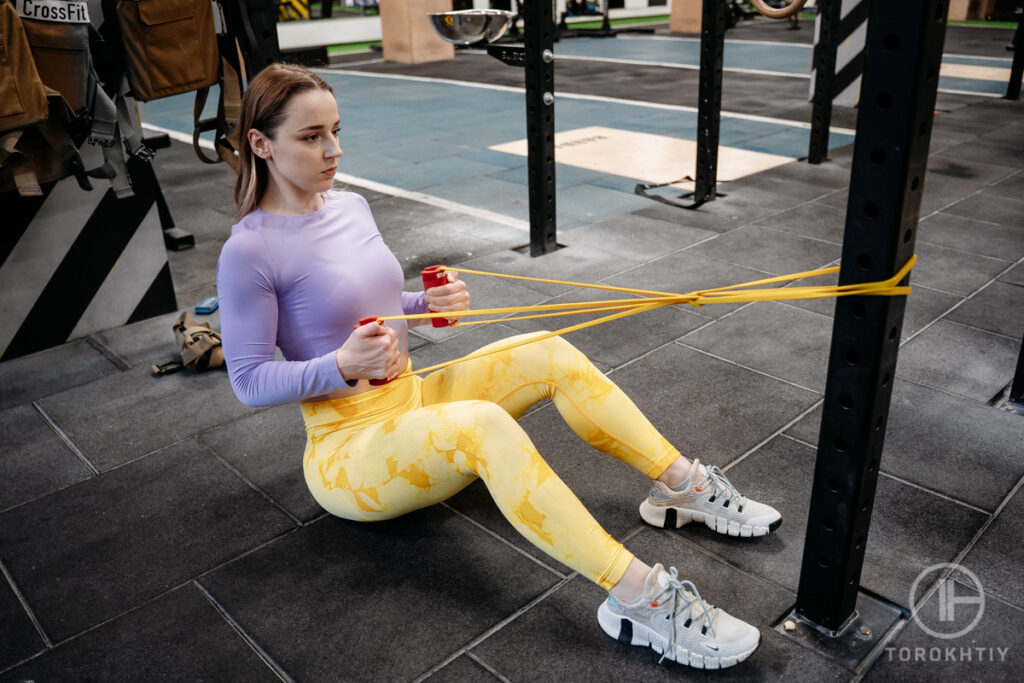
3. Squeeze Those Shoulder Blades
Squeezing your shoulder blades together at the height of the exercise is an important part of rowing. This small but important movement activates the scapular stabilizers, which are crucial for shoulder health. Squeeze your shoulder blades together to activate your upper back, then continue pulling with your arms until your elbows pass behind your back to complete the exercise.
Common Mistakes To Avoid
Rows are not a difficult exercise to learn, especially when compared to serious compound movements like deadlifts. However, there are some things you should be mindful of, which you may not catch yourself doing if you’re training alone without supervision:
1. Overstretching The Band
One common mistake we see people making when attempting to row with resistance bands is stretching the band too far out. This often results in either the band tearing due to pressure or snapping back and possibly hitting you. If you feel as if the exercise is too easy, instead of damaging the bands by stretching farther than they’re intended for, simply change to a higher resistance band.
2. Misunderstanding The Exercise
Traditional rowing, especially outdoors on open water, is a fast-paced motion and rhythm-based movement. However, banded rows don’t always have to be. Depending on your exercise goal you can, for example, use explosive movement to train your speed and power or controlled movement for stability and endurance. Either way, focusing on the quality of the movement is most important to ensure the exercise is effective and to avoid injury. Resistance bands are great for this because they can easily be adapted to your desired workout simply by how fast and loose you stretch them.

3. Losing Posture
Arguably the most important factor when performing back exercises, but also any exercise, is maintaining good posture. When you row, your upper body has to remain in a neutral spine position, regardless of whether you’re standing horizontally, vertically, or at an angle. Arching your back during intense exercise is a common cause of injury. you feel the need to arch or you find it difficult, it means the exercise difficulty is too high, and you should move it down a notch. The importance of keeping our backs healthy can not be overstated — back injuries can have serious implications on our daily lives and can be painful, expensive, and time-consuming to treat.
Variations of Resistance Band Rows
Just like with traditional rowing exercises, there are countless ways in which you can do rows with resistance bands. Here are some example exercises to get you started. Coupling a few of these into your routine should:
1. Seated Row (Unanchored)
To perform seated rows with resistance bands, start by sitting on the floor with your legs extended and wrap the band around your feet. Tip: Don’t just wrap the band around once, it could slip off and you might get a good slap in the face. Instead, wrap it around twice so that when you pull it squeezes and tightens around your feet. The exercise primarily targets the middle back.
2. Standing Banded Row (Anchored)
To perform a standing banded row, we’re going to need an anchor point roughly at the height of our torso. Technically performed the same as the seated row, except we’re doing everything from a standing position. Keep your feet at shoulder width apart and control the pull with your arms. As you pull, you should feel the force of the resistance band pulling you back towards it. You may not be able to use as high resistance as when doing seated rows, but the major benefit of standing rows is practicing balance and stability. The exercise primarily targets the middle back.
3. Bent-over Row (Anchored or Unanchored)
Anchor the band to the floor or close to it. Bend slightly at the knees to create a stable stance, then bend your upper body until you’re nearly horizontal with the floor, but not fully aligned with it. The bent-over row If you don’t have a place to anchor your band, simply step on it to hold it in place. Make sure to do it with both feet and use the middle of your foot to prevent rocking. The exercise puts greater emphasis on the lower back.
4. Inverted Row (Anchored)
For this exercise, we’re going to need to anchor our resistance bands vertically, as we’re going to grip them from underneath. Lie down on the floor and grip your hanging resistance band. Pull yourself up and suspend yourself in the air by holding on to the band, only keeping your heels on the floor. The rest of your body should remain straight. Now pull yourself up in a controlled manner until you complete the full rowing motion (elbows past your back, shoulders squeezed). Lower yourself down in a controlling manner. Tip: To adjust exercise difficulty, simply use your feet to move up and down. The closer your body is to the floor, the more difficult the exercise will be. This exercise will mainly target your upper back.
5. High Row (Anchored)
This exercise can be done from a standing, seated, or kneeling position. First, anchor the resistance bands somewhere higher, so that you end up pulling them down towards you. Unlike some other row exercises, this time your elbows won’t pass directly by your side and behind your back. Instead, as you begin pulling back and your arms start to bend, extend the elbows outward to make a horizontal line. As your elbows go outward, pull the resistance band until your fists reach roughly the level of your upper chest. Remember to squeeze your shoulder blades together to complete the movement. This exercise primarily targets your upper muscles.
6. Single Arm Row
Remember, most of these exercises can also be performed with one arm and side at a time. It may be more time-consuming to exercise one arm at a time, but there are added benefits to doing this. According to research, unilateral (single-arm) movements have been shown to generate greater force than bilateral (both arms). This is due to a phenomenon called the bilateral force deficit (BLFD), which is recognized as the inability of our neuromuscular system to generate maximal force when two limbs operate simultaneously. Most people train unilaterally because it’s more efficient in terms of time and energy expenditure, but if you want maximal results, consider training one arm at a time.
Sample Resistance Band Rows Workout
Here’s an example of a back day workout routine you can do with just resistance bands and an anchoring point. You can choose which exercise suits you better and the level of resistance.
| Muscle group | Exercise |
| Upper Back | Inverted or High row 3-4 sets 8-12 reps |
| Middle Back | Seated or Standing row 3-4 sets 8-12 reps |
| Lower Back | Bent-over row 3-4 sets 8-12 reps |
Resistance band we recommend
If you’re looking for high-quality resistance bands, we recommend the Military Resistance Band Set by Gymreapers. Each set includes five resistance bands that cover a range of 20 up to 150 lbs intensity. as well as a neat carry bag. The bands are 41 inches in length and made from a durable natural latex that doesn’t burn the skin or leave rubbery odors. Plus, the military color scheme looks great and makes them easy to identify.
FAQ
Do Resistance Band Rows Work?
Yes, studies have shown that rows with bands can be just as effective as traditional rowing methods using free weights or a machine rower.
What Bands Are Best For Rows?
A set of 41-inch long resistance bands is an excellent pickup for rowing exercises. Some people may prefer resistance tubes that have handles on them, but they break more easily and limit your grip options.
Conclusion
In summary, resistance band rows are a good alternative to traditional rowing exercises using a machine or free weights. For the average person, they’re just as effective at developing strength and stimulating muscle growth.
With just a couple of rowing exercises with resistance bands, you can create a comprehensive back workout. On top of that, resistance bands are cost-effective, don’t take up space, and can be carried with you and used anywhere. If you’re looking for a quality set, check out the Gymreapers Military Resistance Bands.
We’d love to hear from you as well. What’s your favorite rowing exercise? Also, did you try training with resistance bands before?
Let us know by leaving a comment and make sure to follow us on social media for more valuable fitness content.
Also read:
- Resistance Band Back Exercises
- Do Resistance Bands Build Muscle
- Benefits of Resistance Bands
- Best Resistance Bands
- Resistance Bands vs Weights
- Resistance Band Chest Exercises
References:
- “Latissimus Dorsi Muscle”, https://www.physio-pedia.com/Latissimus_Dorsi_Muscle (accessed Sep.16, 2023)
- “Latissimus Dorsi Muscle”, https://www.physio-pedia.com/Latissimus_Dorsi_Muscle (accessed Sep.16, 2023)
- “Trapezius”, https://www.physio-pedia.com/Trapezius (accessed Sep.16, 2023)
- “Rhomboids”, https://www.physio-pedia.com/Rhomboids (accessed Sep.16, 2023)
- “Deltoid”, https://www.physio-pedia.com/Deltoid (accessed Sep.16, 2023)
- “Biceps Brachii”, physio-pedia.com, https://www.physio-pedia.com/Biceps_Brachii (accessed Sep.16, 2023)
- “Effects of training with elastic resistance versus conventional resistance on muscular strength: A systematic review and meta-analysis”, Lopes JSS, Machado AF, Micheletti JK, de Almeida AC, Cavina AP, Pastre CM., SAGE Open Medicine 2019 Feb 19;7:2050312119831116.
- Jaqueline Santos Silva Lopes,1 Aryane Flauzino Machado,2 Jéssica Kirsch Micheletti,2 Aline Castilho de Almeida,3 Allysiê Priscila Cavina,2 and Carlos Marcelo Pastre, Effects of training with elastic resistance versus conventional resistance on muscular strength: A systematic review and meta-analysis, https://www.ncbi.nlm.nih.gov/pmc/articles/PMC6383082/ (accessed Sep.16, 2023)
- “Muscle Activity in Upper-Body Single-Joint Resistance Exercises with Elastic Resistance Bands vs. Free Weights”, Bergquist, Ronny & Iversen, Vegard & Mork, Paul & Fimland, Marius, Journal of Human Kinetics. 61(1)
- Ronny Bergquist, Vegard Moe Iversen, Paul Jarle Mork, Marius Steiro Fimland, Muscle Activity in Upper-Body Single-Joint Resistance Exercises with Elastic Resistance Bands vs. Free Weights http://surl.li/lylxo (accessed Sep.16, 2023)
- “THE ROLE OF THE SCAPULA”, Paine R, Voight ML. International Journal of Sports Physical Therapy 2013 Oct;8(5):617-29.
- https://www.ncbi.nlm.nih.gov/pmc/articles/PMC3811730/ (accessed Sep.16, 2023)
- “Are Unilateral Exercises More Effective Than Bilateral Exercises?” Mullican, Kurt BS; Nijem, Ramsey MS, CSCS, Strength and Conditioning Journal 38(1):p 68-70, February 2016
- Mullican, Kurt BS; Nijem, Ramsey MS, CSCS, Are Unilateral Exercises More Effective Than Bilateral Exercises? http://surl.li/lylnr (accessed Sep.16, 2023)
- “The Bilateral Deficit Phenomenon, Functional and Dynamometric Assessment in Postmenopausal Women”, ClinicalTrials.gov Identifier: NCT02434185 https://classic.clinicaltrials.gov/ct2/show/NCT02434185 (accessed Sep.16, 2023)
Why Trust Us?
With over 20 years in Olympic Weightlifting, our team does its best to provide the audience with ultimate support and meet the needs and requirements of advanced athletes and professional lifters, as well as people who strive to open new opportunities and develop their physical capabilities with us.
By trusting the recommendations of our certified experts in coaching, nutrition, dietology, and sports training programming, as well as scientific consultants, and physiotherapists, we provide you with thorough, well-considered, and scientifically proven content. All the information given in the articles concerning workout programming, separate exercises, and athletic performance, in general, is based on verified data. We ensure that you can rely on our professionals’ pieces of advice and recommendations that can be treated as personalized ones which will benefit you and fully meet your needs.
The product testing process is described in more detail here
Author: Ihor Shymechko
Pro Olympic Weightlifter, Coach
Best Results: Snatch – 208 kg,
C&J – 240 kg
Ihor has been a professional weightlifter since 1996, boasting over two decades of competition experience. His notable achievements include clinching the European Championship in 2009 and securing a silver medal in the 105kg division at the Senior World Championships in 2011. Ihor represented his country in the 2008, 2012, and 2016 Summer Olympics. After retiring from competitive weightlifting, he transitioned to coaching, leveraging his vast experience to guide athletes who now compete on both national and international stages.

